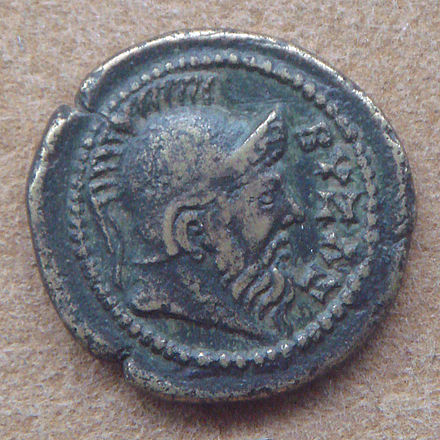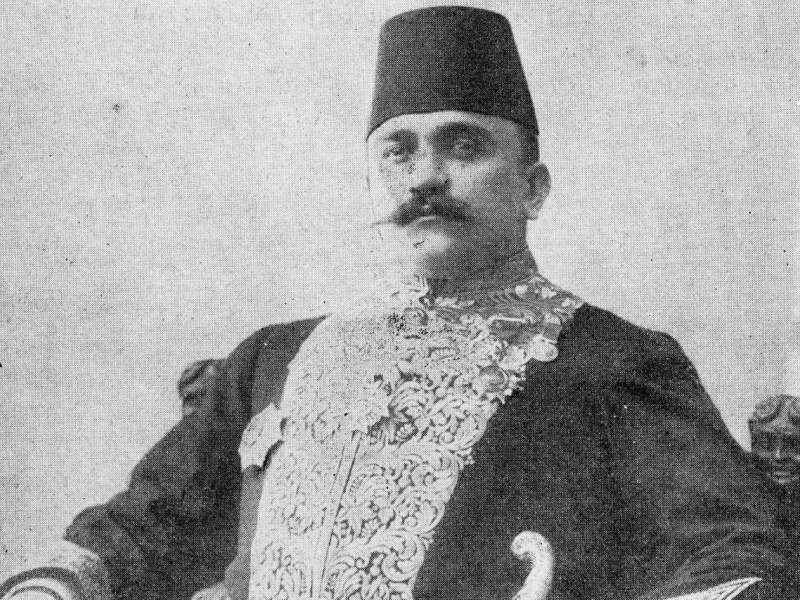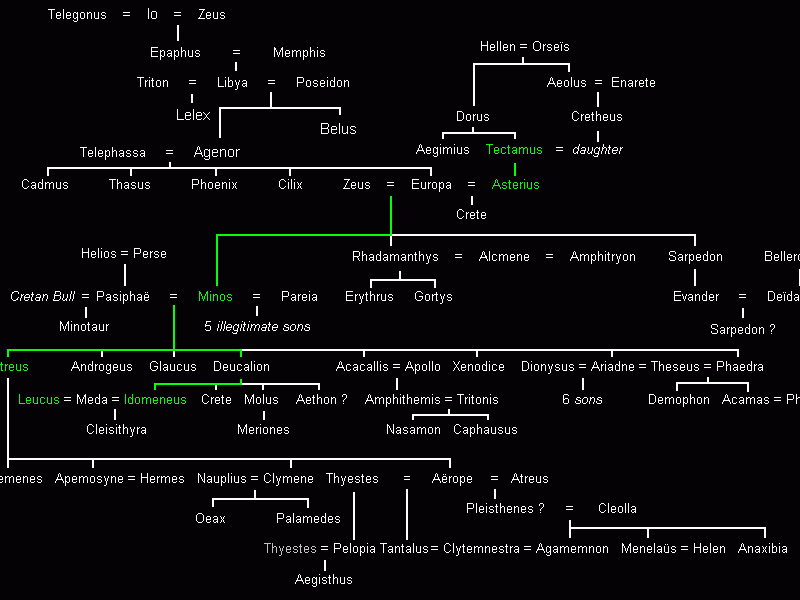Byzas: The Megarian Founder and the King of Byzantium
Byzas was a colonist who laid the foundation of the Byzantium empire along with his people. He is most famous for being a true king and the founder of the great Byzantium nation. Although there are many personalities in the literature that are named Byzas, the King of Byzantium stands out because of his personality and administrative prowess. Here we bring you all the information about the king of the Byzantium people, his life, and most importantly the great empire itself.
The Origin of Byzas
Byzas was the son of King Nisou of Megara in Greek mythology. Megara was an important trade port and one of the four cities of Attica in ancient Greece which was later taken into Athens.
King Nisou was an important figure in the mythology as he consulted the oracle of Apollo at Delphi who was the most famous oracle in the history of Greek mythology. The mother of Byzas is unknown but he was the legitimate heir to the throne and the son of King Nisou.
He had a normal childhood among the royals of Megara city. He learned the ways of the warriors but his heart belonged to ruling and administration. He wanted to become an administrator and rule his own city when the time comes.
Nonetheless, it was his wish and this wish came true not long after when his father told him about the order of the oracle at Delphi that would change his life forever. The oracle ordered him to find a land and settle a new colony opposite “the land of the blind” which was also called Chalcedon.
This was a great opportunity for him to make his wish come true so he accepted the order and set out to find a land where he and his fellow Megarians would settle and form a colony of the new world. Neither did King Nisou nor Byzas know at the time that he was going to put down the foundation of one of the greatest empires that the world will ever see.
Founding Byzantium
He found a perfect piece of land just opposite the Chalcedon which had a beautiful seaport and dynamic landforms. This land was everything that Byzas had wished for and he was surprised to know that the people of Chalcedon were in complete oblivion and had preferred to settle away from the port.
Nevertheless, he laid the foundation of the great empire of Byzantium opposite Chalcedon as ordered by the oracle and his father, King Nisou. The port is now known as the infamous Bosphorous port and the empire is now under Turkey, its European side.
The Megarian colonists, including Byzas, started planning and building the city from scratch. They built a colony at the mouth of the sea and took full advantage of the port. This port turned out to be the turning point for the empire as in no time it became one of the busiest ports in the world at that time.
Thus in 667 B.C.E, he founded Byzantium on the order of the oracle and rose the empire from dust to its glory, and around a millennium later, Byzantium was renamed Constantinopole.
History of Byzantium
The history of Byzantium is very interesting as this city withstood many wars, hostile takeovers, time, natural disasters, and various ruling parties. The city whose foundation was laid by a Megarian was in the eyes of many predatory rulers because of its position on the world map.
With time the friends of the state turned to foes and many new allies were formed. Byzas stayed the king of the empire until his death and after that many people claimed the empire as it was a newly built state.
Different Byzas’ in History
History has many great personalities named Byzas who have their own epic stories and tales to tell. Here we have talked about the one, the founder of the Byzantium empire in 667 B.C.E. Now we talk about the lesser known Byzus who has an incredible story in Greek mythology:
Son of Poseidon
In Greek mythology, Poseidon was an Olympian god of all water bodies and the brother of the great Olympian god, Zeus. According to Theogony by Hesiod, Poseidon had an estranged son named Byzas. Theogony is famous for iterating and enlisting the genealogy of Greek gods from the start of time. It is still debatable whether the one of Byzantium and one of the son of Poseidon are the same entities or not but both of them surely have a spot in history.
Poseidon and Keroessa bore Byzas. This story is not at all as simple and straightforward but is full of betrayal and deceit. It all started when Zeus fell in love with Io, the daughter of king Inachus who was the God of the River of Argos and the King of the City of Argos.
Zeus was already married to Hera and because Hera was known for committing brutalities against the lovers of Zeus, King Inachus transformed his daughter into a heifer in hopes of her safety from Hera.
Io was with the child then and when she regained her original form back, she gave birth to Keroessa. The latter then bore a son to Poseidon who had very peculiar patronage but nonetheless a very royal one.
FAQ
What Is Byzantium Called Today?
Byzantium is called Istanbul today but it acquired this name after many alterations. After around a Millenium, the infamous and unique name Byzantium was changed to Constantinopole. The land kept this name for a very long time until the rise of Turks who renamed it Istanbul. In the world today, Istanbul is very well known for its Bosphorous and also its beautiful and diverse culture.
Is There Any Town Named After a Nymph in Ancient Greece?
Yes, a small town in Ancient Greece is named after the nymph Semystra. The town was located in ancient Thrace and it thrived during the Greek colonization. But like many small towns and cities, this town also got lost in the geography of the world.
Conclusion
In this article, we took you through the life of Byzas. Here we summarize the article in some of the most important points:
He was an Ancient Greek colonist who laid the foundation of the great Byzantium empire in 667 B.C.E which would make a very prominent place on the world map.
He was the son of King Nisou of Megara. He spoke with the oracle of Apollo at Delphi and took orders from it. The oracle ordered him to find and settle a colony opposite Chalcedon and so he did.
The land he colonized was later named Byzantium and was at the mouth of the Bosphorous river. The city is now under Turkey and is now called Istanbul.
He stayed the king of the empire until his death and after that many people claimed the empire.
There exists another he in Greek history who was the son of Poseidon and Keroessa, who had the same name as the founder of Byzantium.
He was surely an important ruler in Greek history and mythology. He was the king and the founder of the Byzantium empire on the order of Apollo at Delphi.






